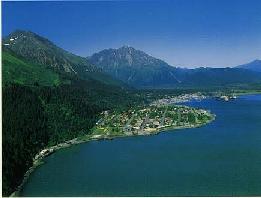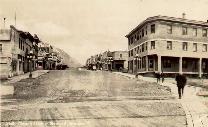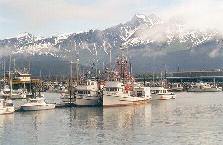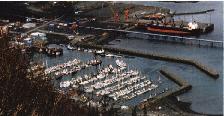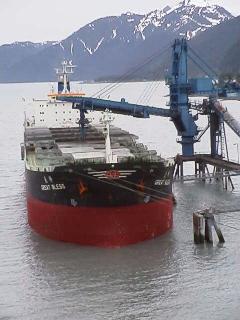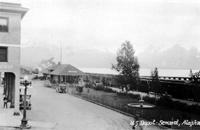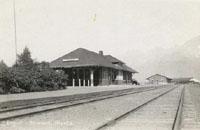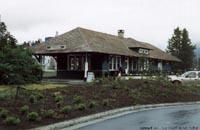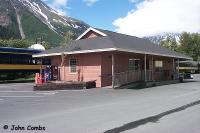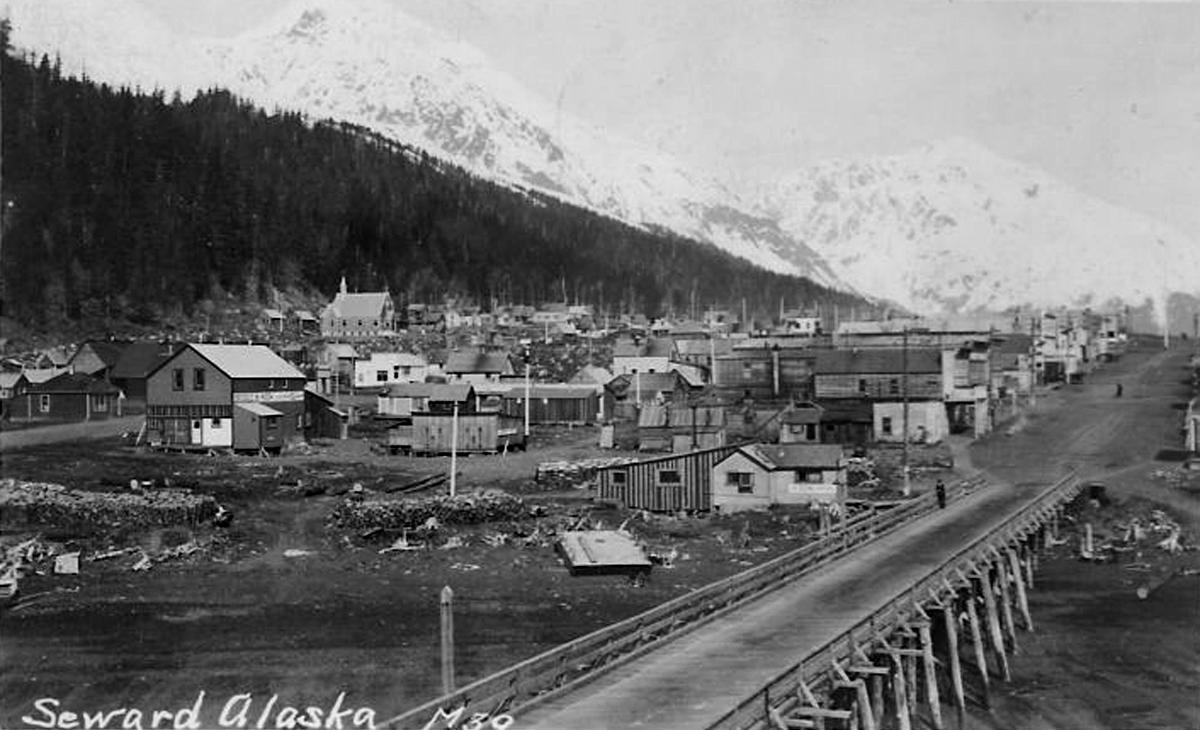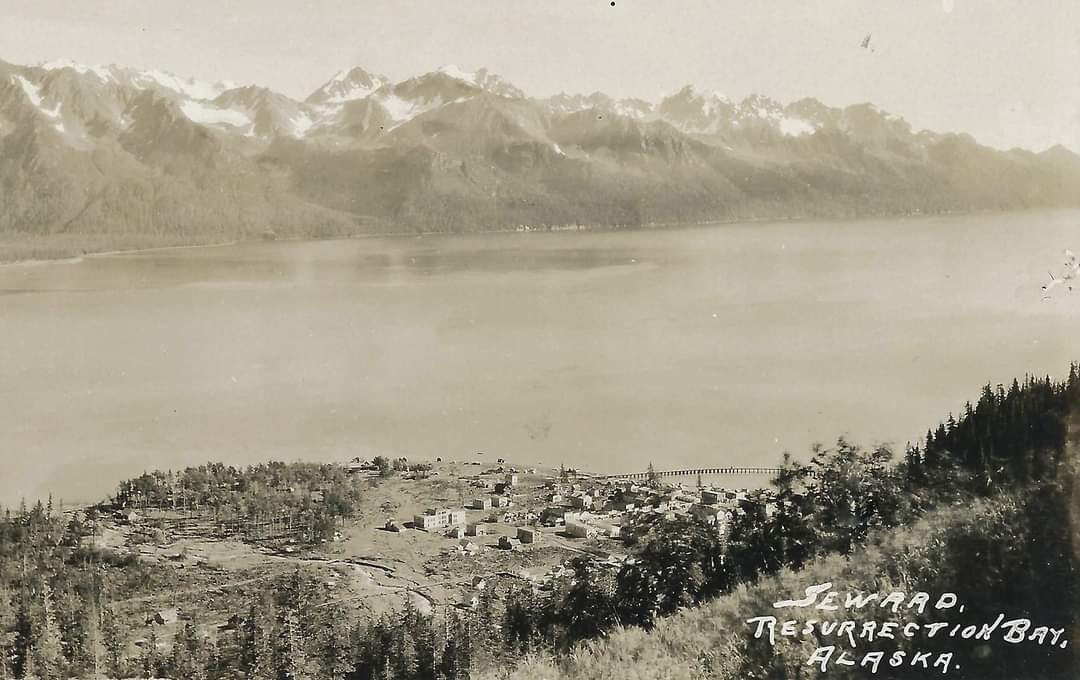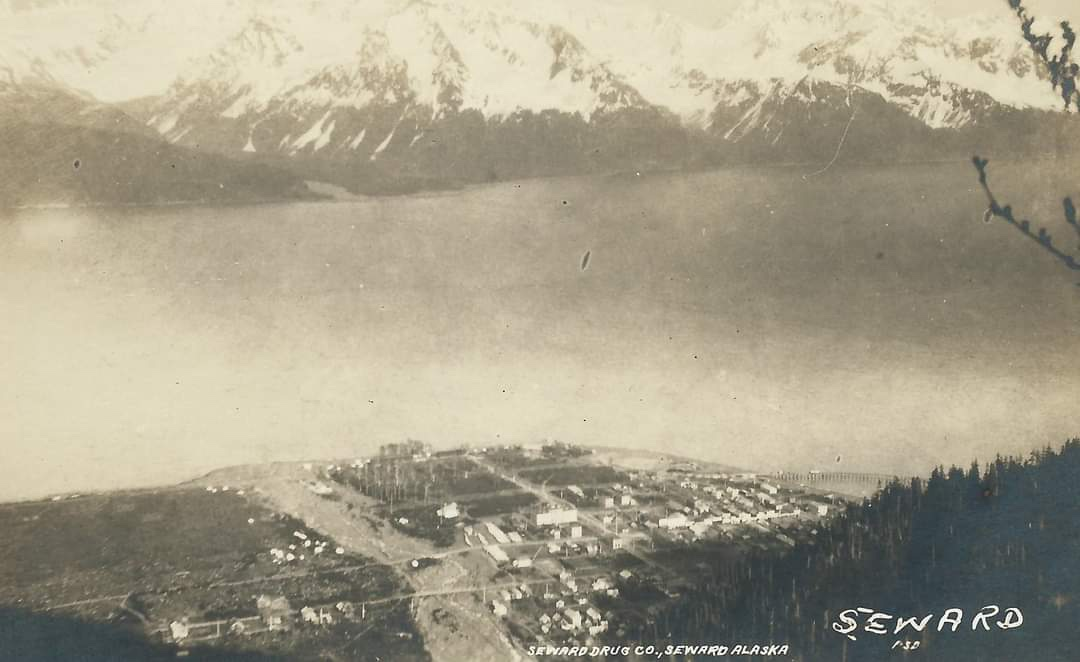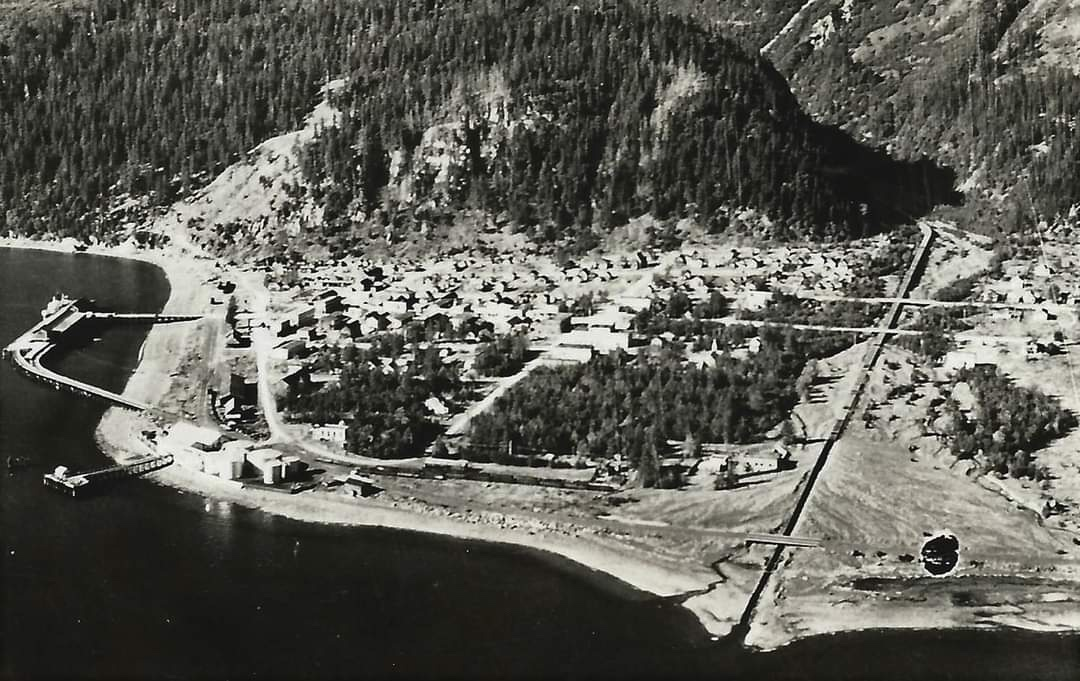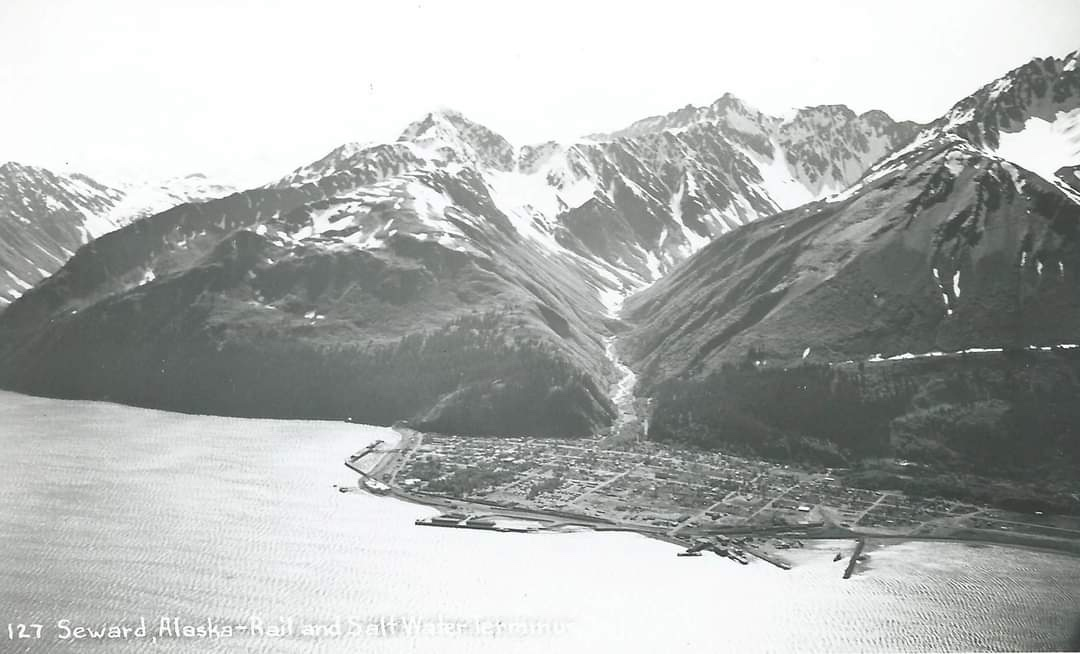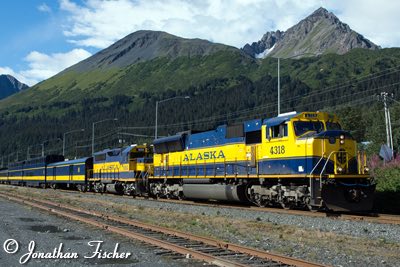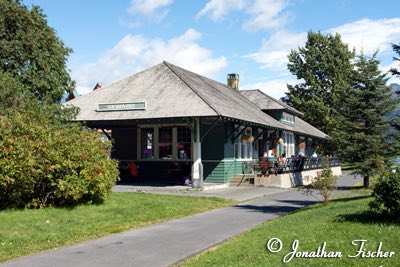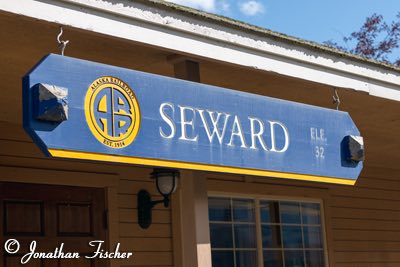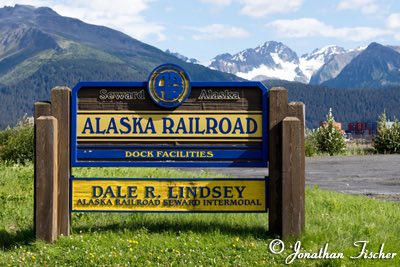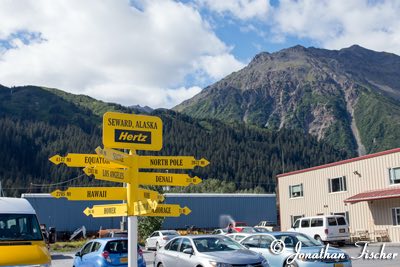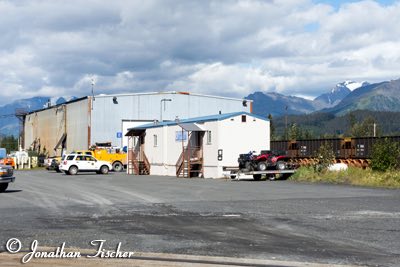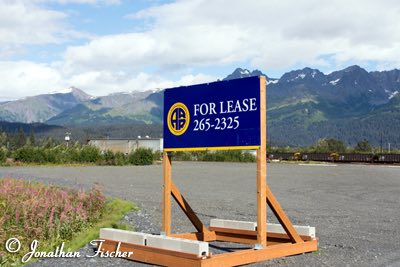Seward Current Population: 2,693 (as of
2010) Seward is situated on Resurrection Bay on the southeast coast of the Kenai Peninsula, 125 highway miles south of Anchorage. It lies at the foot of Mount Marathon, and is the gateway to the Kenai Fjords National Park. The area encompasses 15 sq. miles of land and 7 sq. miles of water. Seward experiences a maritime climate. Winter temperatures average from 17 to 38; summer temperatures average 49 to 63. Annual precipitation includes 66 inches of rain and 80 inches of snowfall.
Added 11/27/23: It was 1903 and railroad man John Ballaine selected what we call Seward today as the terminus for the Alaska Central Railway. The town of Seward grew rapidly as the eastern side of the Kenai Peninsula experienced an infusion of money never experienced before. Flowing through Seward was a creek….its name was Lowell Creek. This circa 1910 post card shows Lowell Creek flowing on the then outskirts of the tiny town in its rush to Resurrection Bay. The Alaska Central Railway venture went bankrupt, its successor Alaska Northern Railway went under and then finally the railroad properties were purchased by the US Government. Seward continued to grow and expand across Lowell Creek. This 1915 postcard shows this expansion. But there was a problem. Lowell Creek ran from the mountains and often severely flooded causing extensive damage. Seward continued to grow and expand. Periodic floods continued too. In 1927 the Alaska Railroad Commission decided to build a dam and a wooden flume to carry water and debris to Resurrection Bay. It was expensive to maintain and just ten years later rapidly deteriorating. This 1930’s photo shows the wooden flume and excavation where Lowell Creek once upon a time flowed wild and free. The Corps of Engineers was asked to come up with a solution to the problem. It was determined a diversion through Bear Mountain was required. A concrete lined tunnel was constructed and by 1940 Lowell Creek no longer flowed through Seward. This is why when you take the road past the Sea Life Center towards Lowell Point you will see water flowing out of the side of the mountain.
As the southern terminus for the Alaska Railroad and road link to Anchorage and the Interior, Seward has long been a transportation center. The economy has diversified with tourism, commercial fishing, ship services and repairs, oil and gas development, a coal export facility for Usibelli Mine (pictured at right is a ship being loaded with coal), a State Prison, and the University of Alaska's Institute of Marine Sciences. An annual salmon derby is held, and a race up nearby Mt. Marathon every July 4th attracts athletes from a wide area. The new $52 million Alaska SeaLife Center opened in May of 1998. Seward hosted tourists from over 110 cruise ship dockings in 1997. Over 200,000 travelers toured the Kenai Fjords National Park visitors center in Seward in 1996. The Alaska Railroad provides over 1.4 billion pounds of cargo transit each year, importing cargo for the Interior and exporting coal to the Pacific Rim. A new railroad depot was completed in the fall of 1997. Click here to view the Seward railroad yard diagram or here for an aerial view of Seward. The Alaska Railroad sold several old passenger cars and they were converted for other uses. First is a set of four troop sleeper cars which are used as rooms and a gift shop. At one time, a coach served as Seward's visitor information center. Also check out the Picture of the Week entry for May 30.
Jonathan Fischer says of his photos, "Here’s a couple shots from that really great day trip to Seward." August 18, 2015
Page created 12/1/99 and last updated 11/27/23 |
